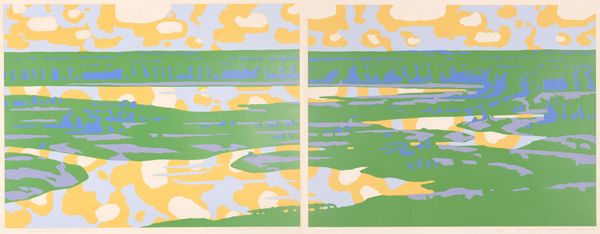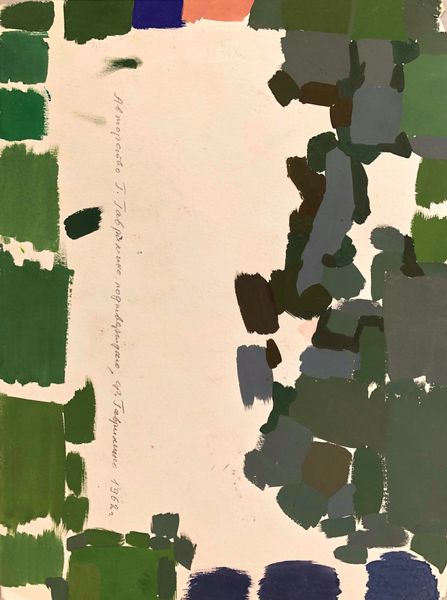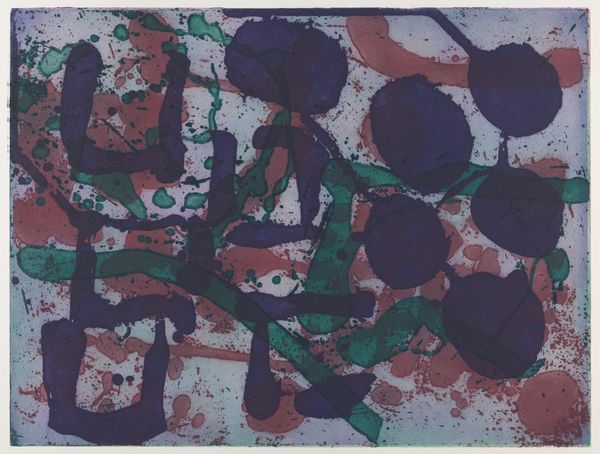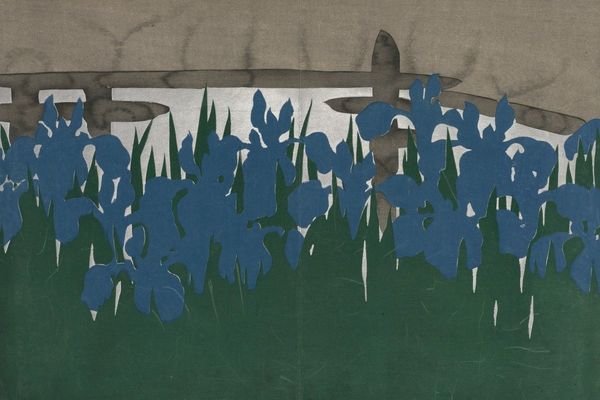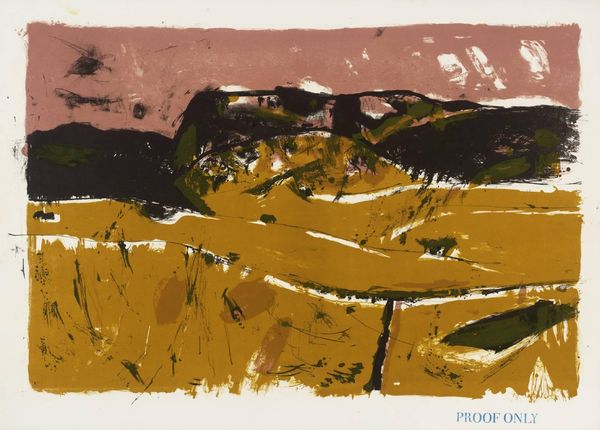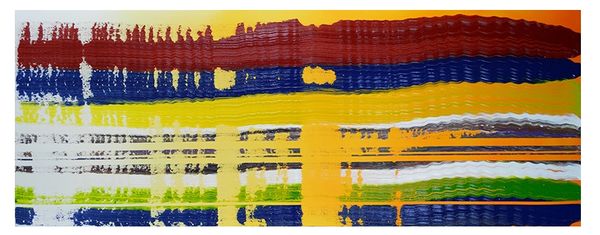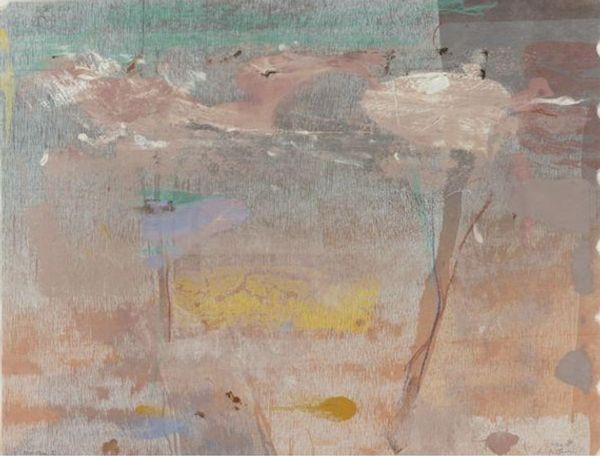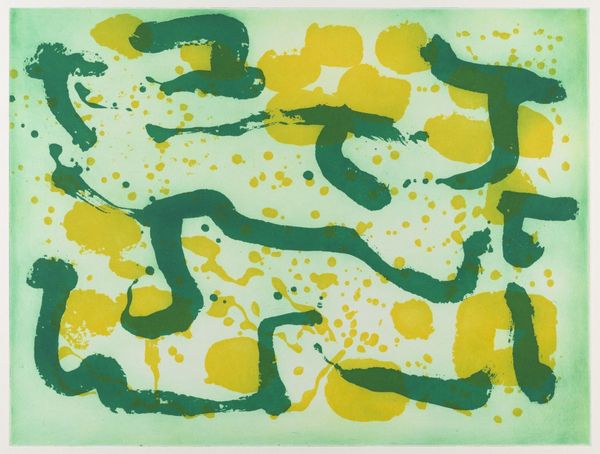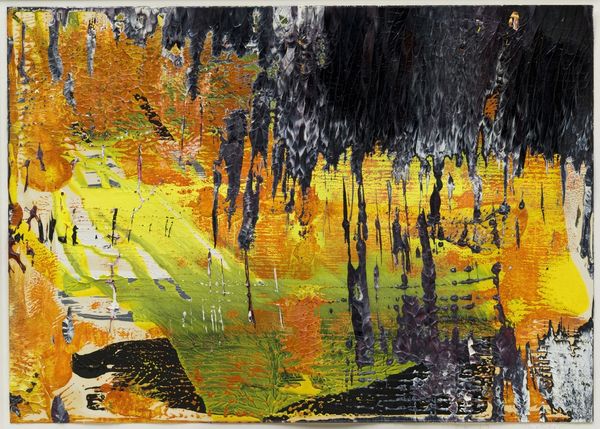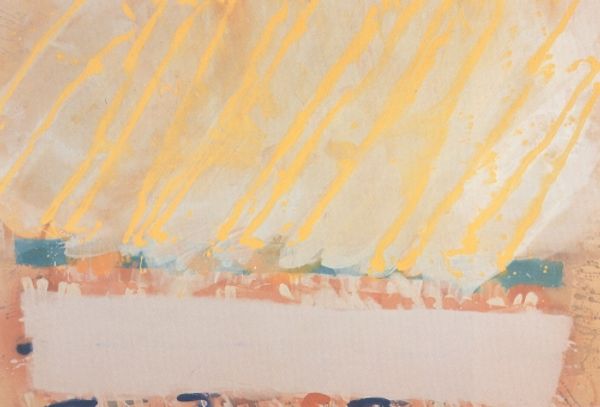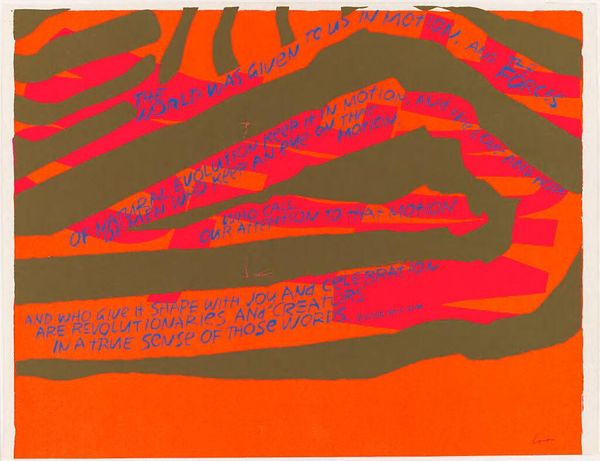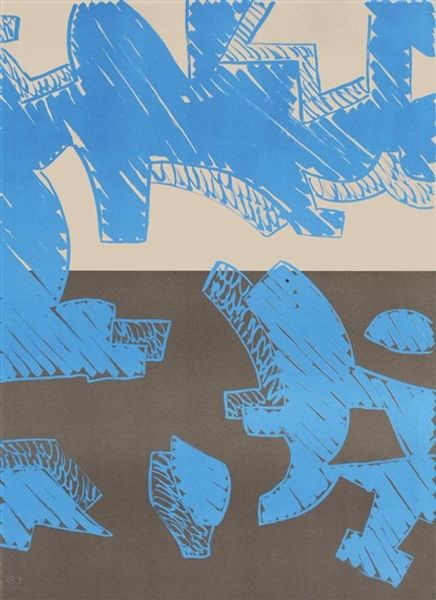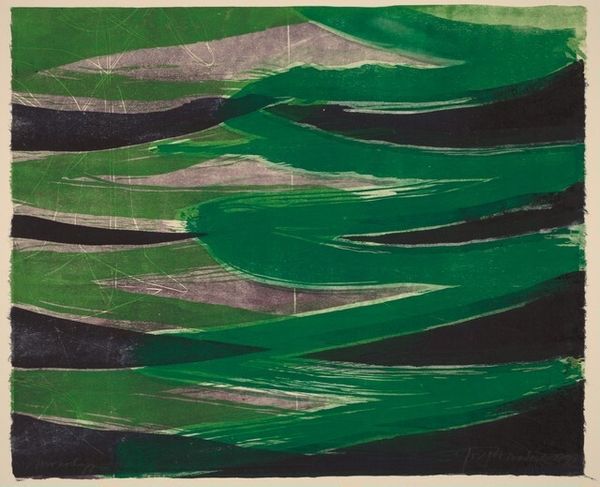
# print
#
landscape
#
geometric
#
abstraction
Copyright: Hryhorii Havrylenko,Fair Use
Curator: Looking at this work by Hryhorii Havrylenko from 1982, titled “Mykhailivske. Diptych. II,” one can see a clear use of geometric abstraction to capture the essence of a landscape. Editor: My immediate impression is of calm, almost stilled energy. The blocky shapes feel solid, but the colours evoke a certain dreaminess, a removed stillness. What do you think? Curator: That’s an interesting point. For me, the choice of colours speaks volumes. The blend of greens and blues alongside the yellows and oranges reminds me of traditional landscape paintings, but then distorted through a very modern lens. Perhaps alluding to a sense of memory – a shared landscape, but reframed. Editor: A distortion reflecting socio-political changes perhaps? The simplification might reflect the controlled environment of Soviet-era artistic expression, where abstraction was both a refuge and a risk. Curator: Precisely! Havrylenko could have been using abstraction to negotiate that cultural tension. He wasn't directly replicating the world but using archetypes. Notice the geometric shapes evoke memories or feelings tied to place and nature, while also transcending mere representation. Editor: This resonates, as it speaks to the role of artists negotiating public expectations. How to reflect lived experience and cultural memory without stepping directly into political debates. What did abstraction offer here, do you think? Curator: The abstraction served to evoke a cultural memory while skirting the restrictions of overtly representational socialist realism, inviting people to engage with familiar landscape forms. The colours help carry emotional information related to memory as well. Editor: It leaves us reflecting on how art, especially during politically complex times, can perform a vital social role simply through the language of form and color. I find this work offers a compelling case study in how artistic choices become a form of subtle dialogue. Curator: Indeed. It reveals layers of meaning beneath what at first seems like a purely abstract composition. A dialogue about memory, place, and cultural identity expressed through geometric visual forms.
Comments
No comments
Be the first to comment and join the conversation on the ultimate creative platform.
